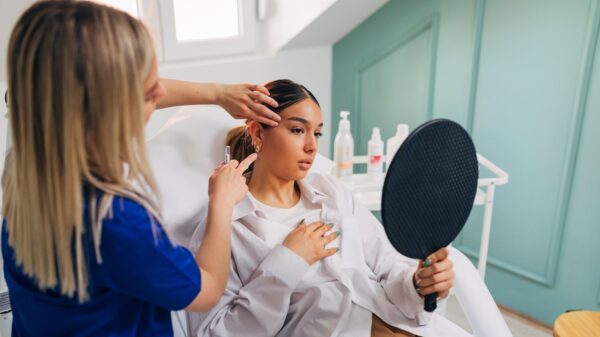
Skincare in Your 30s – What You Need to Know
Do you know your Hyaluronic Acid from your Salicylic Acid? Can you translate the ingredients on your cleanser? The science of skincare is complicated, especially if you have specific concerns you’re looking to tackle. Here we have compiled a simple guide to common skincare ingredients, what they do and where to find them. Keep reading for further information.

Once you’ve finished mourning your twenties, it’s time to get serious about your skincare routine. While your thirty-something face will thank you for less partying and less sunbathing, a swipe of a face wipe and a dollop of moisturiser just isn’t going to cut it in the great war on dark circles and wrinkles.
During your thirties, your hormone levels begin decreasing, and the rate at which collagen and elastin (both keep your skin looking firm and full) slows down. You may even begin to notice some sags and bags (lovely).
Fine lines might start to show around your eye area, frown lines may put in an appearance and you may even begin to see early signs of hyperpigmentation. But fear not. If you begin to put the building blocks of good skincare into position in your early thirties, you’ll reap the benefits for years to come.

Prevention, as they say, is better than a cure, and the younger you are when you begin to use serious skincare like antioxidants, acids and hydration, the better your skin will be when it is more mature.
With this in mind, we’ve collaborated with Healthxchange Pharmacy – an award-winning distributor of pharmacy and aesthetic supplies, to bring you a list of holy grail skincare products for your thirties:
Retinol
What is it? A topical vitamin A derivative, retinol speeds up cell turnover, helping to remove dead skin cells that can clog pores and make skin look dull. It’s one of the few proven ingredients for smoothing the texture of lines and wrinkles – boosting collagen and elastin production by stimulating cellular repair and increasing blood vessel formation.
Initially, you should start using an over-the-counter low percentage retinol product around two to three nights each week. Once you have been using the product for between six months and a year, or when you feel ready to step it up, you can move to prescription strength retinoid.
Found in: Retinol is usually found in leave-in treatments, in varying percentages based on strength.
Hylauronic Acid
What is it? Hyaluronic Acid naturally occurs in our skin and plays an important role in moisture retention. Hydrated skin appears plump, firm and glowing, while dehydrated skin can often look sallow and sagging.
With its unique ability to hold up to 1000 times its own weight in water, hyaluronic acid acts like a sponge, holding water in the skin and plumping it out to reduce the appearance of fine lines and wrinkles.
As we age however, production of hyaluronic acid begins to slow, so it is now available to be applied topically as a key ingredient in a range of serums and creams. While the molecule can’t penetrate deep down into the dermis layer, even on the surface it is able to keep the skin well hydrated and supple, producing temporary plumping effects.
Found in: Hyaluronic acid is best applied as a serum or a hydrating cream, left on the skin to penetrate and plump.
AHAs/Liquid Exfoliators
What are they? Alpha Hydroxy Acids, more commonly known as AHAs, offer chemical exfoliation as an alternative to manual exfoliation, working primarily by dissolving the bonds between cells to remove dead skin. Found in most anti-aging products this is great for re-texturising the skin, revealing a brighter complexion as well as clearing pores.
Low concentrations (from around four per cent) are usually gentle enough for regular at-home use, whilst chemical peels utilise concentrations of up to 70 percent and should be used under the supervision of a medical professional.
Found in: AHAs can appear in face washes, masks, serums and creams. Rinse-off products have less time to work their magic, so serums are often preferred since they can be topically applied, have smaller molecules than creams and have longer in contact with the skin.














































